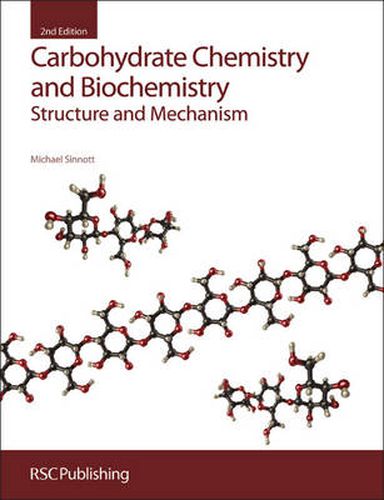Readings Newsletter
Become a Readings Member to make your shopping experience even easier.
Sign in or sign up for free!
You’re not far away from qualifying for FREE standard shipping within Australia
You’ve qualified for FREE standard shipping within Australia
The cart is loading…






This fully updated and expanded second edition of a highly popular text book focuses on the structure and mechanism in carbohydrate chemistry and biochemistry.
Carbohydrates play important roles in biological systems as energy sources, as structural materials, and as informational structures (when they are often attached to proteins or lipids). Their chemical reactivity and conformational behaviour is governed by mechanistic and stereochemical rules, which apply as much to enzymic as to non-enzymic reactivity. The same principles of reactivity and conformation govern changes brought about in the process industries, such as pulp, paper and food.
Extensively referenced with citations and a detailed index, the book contains everything the reader needs to know to start a carbohydrate research project with one of the real strengths being the treatment and integration of the important physical-chemical principles and methods (though lead references only are given to the finer points of carbohydrate synthesis).
The book is suitable for both researchers who are new to the subject and those more established as well as a readership from diverse backgrounds and interests, including chemists, biochemists, food scientists and technologists involved with the processing of polysaccharides in the paper, textile, cosmetics, biofuels and other industries.
$9.00 standard shipping within Australia
FREE standard shipping within Australia for orders over $100.00
Express & International shipping calculated at checkout
This fully updated and expanded second edition of a highly popular text book focuses on the structure and mechanism in carbohydrate chemistry and biochemistry.
Carbohydrates play important roles in biological systems as energy sources, as structural materials, and as informational structures (when they are often attached to proteins or lipids). Their chemical reactivity and conformational behaviour is governed by mechanistic and stereochemical rules, which apply as much to enzymic as to non-enzymic reactivity. The same principles of reactivity and conformation govern changes brought about in the process industries, such as pulp, paper and food.
Extensively referenced with citations and a detailed index, the book contains everything the reader needs to know to start a carbohydrate research project with one of the real strengths being the treatment and integration of the important physical-chemical principles and methods (though lead references only are given to the finer points of carbohydrate synthesis).
The book is suitable for both researchers who are new to the subject and those more established as well as a readership from diverse backgrounds and interests, including chemists, biochemists, food scientists and technologists involved with the processing of polysaccharides in the paper, textile, cosmetics, biofuels and other industries.